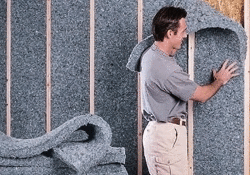PAINTING WALLS AND WOOD WORK

PAINTING WALLS & WOODWORK The better the surface, the easier it will be to get a good finish when painting walls, ceilings and woodwork. Prepare the surface well for the best results (pages 208-211). If you are using a paint roller, paint the ceiling, then the walls before painting woodwork, as the roller tends to create a fine spray of paint which covers adjacent surfaces. With a paint pad or brush, paint the ceiling first, then the wood- work and finally the walls. Work in a clean, dust-free room, preferably in daylight. Start with the highest point and work downwards. When painting an absorb- ent surface, such as bare plaster or lining paper, thin the first coat of paint as directed by the manufacturer to get an even undercoat. Open paint tins carefully so that dust from the lid does not get into the tin. Always check the manufacturer's instruc- tions before buying paint: with water-based paints you can wash your brushes out in water, while oil-based paints have to be washed out with white spirit or brush cleaner. Large areas can be painted with a paint roller or paint pad, although many decorators prefer to use a wide paint brush. You will need a smaller brush or paint pad to get an even finish at the edges of walls and in corners. Arrange plenty of plastic sheets or dust covers over floors and fixtures. CEILINGS & WALLS 1. When painting ceilings and high rooms, arrange two sturdy stepladders with a stout plank between, or use a solid box or milk crate, at a convenient height. 2. Start by cutting in around the edge of the ceiling or wall using a 5 ern (2 in) wide paint brush. Paint a band about 5 cm (2 in) wide down the corners and up to any obstruc- tions such as doorways, windows, light switches and fireplaces. Do not overload the brush: wipe any excess on a string tied across the top of the paint can. Use a light touch, working the paint in all directions so that the brushstrokes do not show. Fill in the rest of the area working in blocks then work vertically over the same area, finishing with upward strokes. With a roller, dip the roller in the paint tray and squeeze out excess paint by rolling it over the ribbed part of the tray. Then apply the paint with criss-cross trokes for an even finish. If you prefer a paint pad, apply the paint with vertical strokes, fmi hing with horizontal or diagonal strokes if necessary. The aim is to cover the area evenly without any strokes showing. Continue to the next 'block', working the paint into the wet edge so that it doesn't show. Work so that the edges of one block do not dry out before you start on the adjacent block.